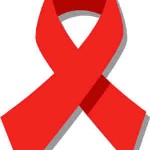 There is preliminary evidence of an association between low vitamin D blood levels and a higher risk, according to this study at Muhimbili University of Health and Allied Sciences, in Dar es Salaam, Tanzania.
There is preliminary evidence of an association between low vitamin D blood levels and a higher risk, according to this study at Muhimbili University of Health and Allied Sciences, in Dar es Salaam, Tanzania.
First, the details.
- 884 HIV-infected pregnant women participated in a vitamin supplementation study.
- The primary objective was to assess pregnancy outcomes and child mortality.
- In addition, the researchers looked for a relationship between vitamin D blood levels and the risk of pregnant women transmitting HIV to infants during delivery.
And, the results.
- A low maternal vitamin D level (less than 32 ng/mL) was associated with a significant 50% higher risk of mother-to-child transmission of HIV at 6 weeks.
- There was a significant 2-fold higher risk of mother-to-child transmission of HIV through breast-feeding among children who were HIV uninfected at 6 weeks.
- There was a significant 46% higher overall risk of HIV infection.
- Children born to women with a low vitamin D level had a 61% higher risk of dying during the next 2 years.
The bottom line?
If supported by rigorously designed studies, “vitamin D supplementation could prove to be an inexpensive method of reducing the burden of HIV infection and death among children, particularly in resource-limited settings,†concluded the authors.
10/6/09 22:31 JR